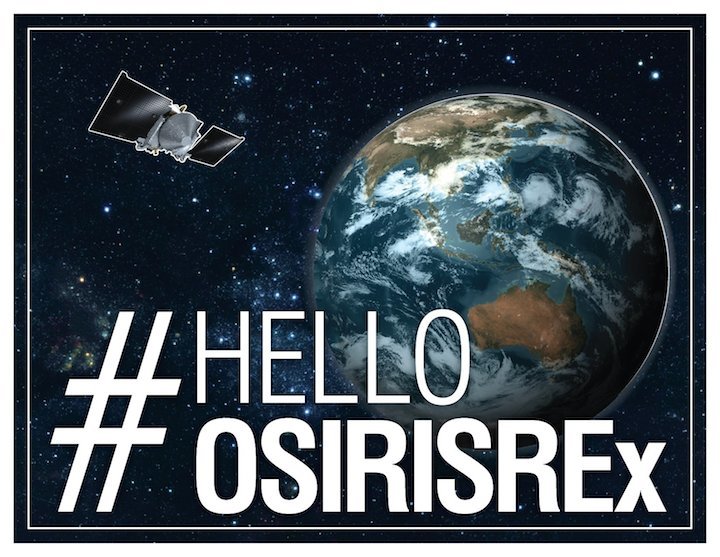This fall, NASA’s asteroid-hunting spacecraft, OSIRIS-REx, will fly by Earth and use the planet’s gravitational force to slingshot itself out into space. This maneuver, known as an Earth Gravity Assist, will put OSIRIS-REx on course to visit asteroid Bennu, where it will collect a sample of some of the oldest material in the solar system. While the engineering team is busy carrying out the Earth Gravity Assist, the mission invites members the public to mark the occasion by participating in the Wave to OSIRIS-REx social media campaign.
HOW TO JOIN:
Take a picture of yourself or your group waving to OSIRIS-REx as it approaches Earth. Then share your photo using the hashtag #HelloOSIRISREx and tagging the mission account on Twitter (@OSIRISREx) or Instagram (@OSIRIS_REx). Bonus: Download these printable graphics to include in your photo.
WHEN:
Start posting pictures as soon as you like, or wait until the OSIRIS-REx spacecraft makes its closest approach to Earth at 16:52 UTC/12:52 ET/9:52 PT on Friday, Sept. 22, 2017.
WHO:
People all over the world! Science centers, air and space museums, K-12 classes, universities and other groups are also encouraged to gather a crowd for a photo during the spacecraft’s flyby on Sept. 22. Planning a group photo at your facility? Let us know. Contact us at socialmedia@orex.lpl.arizona.edu.
The OSIRIS-REx mission, NASA and other mission-related accounts may re-share some submissions on social media, create a mosaic or other combined products, or aggregate selected submissions on relevant websites.
Quelle: NASA















